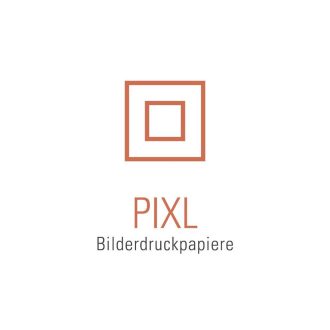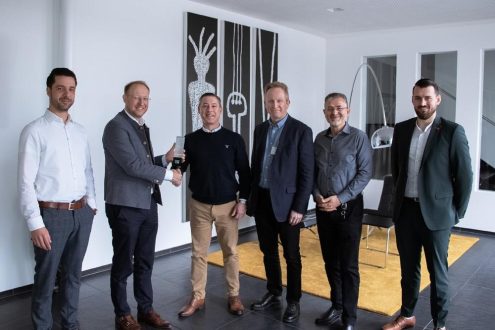How a unique 3D printer with conveyor belt will transform volume production
3D printing has been impressing for years and its triumphal march continues
In the mid-2000s, the concept of 3D printers slowly became better known, and by the early 2010s at the latest, the new technology was on everyone’s lips. The small devices were mainly used for home use and impressed with the almost limitless design possibilities: With the help of the layering process, the most diverse objects and individual ideas can be realized. For hobby users and producers of personalized products or extravagant objects in small runs, this is a rewarding field of activity.
The advantages of additive manufacturing did not remain closed to industry, and so the machines also found their way into more technical applications. On a larger scale, commercially and industrially, commercial use of 3D printers has focused primarily on prototyping, scale models and complex workpieces. However, as the range of printable materials and material combinations continues to expand – in addition to plastic and metal, these can include resin, sand, glass, concrete or ceramics – 3D printing is becoming increasingly attractive for the manufacture of end products. Increasingly, reports of milestones such as entire houses, bridges or boats made by 3D printers are making their way through the media. However, the fact that media attention is still very high in these cases also shows that it is not yet common to use 3D printing for such large-scale projects. In fact, 3D-printed objects for end users still account for only a fraction of the market share. As R&D progresses, though, it is becoming increasingly attractive to build one’s business model on 3D printing technology these days.
The USP is customizability – a limited advantage for the catalog of requirements for industrial applications
But to effectively use 3D printing for its business, some difficulties arise with commercially available devices. One of them is printing between two points that are not connected by a common base, such as bridges, overhangs or hollow bodies. Here, the usual method quickly results in sagging of the printed material due to simple laws of physics. In these cases, additional structures are printed to support the main design. However, this also means that printing takes longer, more material is required, and thus a considerable additional economic expense is incurred.
The second difficulty is printing "continuous objects," i.e., items that are several meters long, for example. Conventional 3D printers reach their limits here due to their design with a rigid printing base. Large-format printers can fulfill such dimensions to a certain extent, but often cost a six-figure sum or higher and are thus simply not available to small companies. In addition, they also require the appropriate floor space, which is not readily available to every medium-sized company. And last but not least, 3D printers in any form lack true automation. Regardless of the size of the printer, it always relies on being manually emptied after a print job in order to start a new job. If the print area is full, production cannot continue until an employee has taken care of the device. The devices are therefore currently unsuitable for series production on a larger scale.
The solution is to align additive manufacturing with automation – via conveyor belt technology
Eliminating these shortcomings of additive manufacturing is the goal of iFactory3D GmbH from Düsseldorf. Founded in 2020 by Artur Steffen and Martin Huber, the startup has developed the "One Pro," a conveyor belt 3D printer that can theoretically print infinitely long objects – with a footprint that fits on any desk. With a continuous conveyor belt instead of a rigid print base, the printer handles the automatic production of larger batches largely automatically thanks to a print queue and material sensor. With a sufficient supply of filament, the device can print for days, weeks even up to months. And thanks to a 45-degree angle setting of the print head, even complex shapes such as cavities are no problem without additional support structures. All in all, iFactory3D speaks of drastic time and material savings as well as a reduction in production costs of up to 40 percent on average for small and medium series. As a result, the One Pro has the potential to make 3D printing a fast and cost-effective alternative to conventional manufacturing processes.
Technological refinement and other advantages
The One Pro handles a wide range of filaments, including PETG, PLA, ABS, ASA, TPU, PC and nylon. Parts installed in the printer, such as guide rails, extruders, nozzles and conveyors, are sourced from European suppliers, meet high quality standards and are often considered by experts to be among the leading products in their price range.
For customers who are just learning the technology, iFactory3D offers professional training. Companies can book exclusive online training courses for their employees, in which extensive know-how about 3D (belt) printing is imparted. In addition, the experts are available for any questions via personal support. E-mails are handled in German and English, and telephone and video calls may be arranged for more complex problems.
The in-house research and development department also provides support in the development of new and the optimization of existing 3D projects. It advises on the choice of materials and suitable printer equipment. In the case of individual wishes and requirements, it carries out the appropriate modifications and developments.
Anyone wishing to completely outsource the printing of test products or series can draw on a great deal of expertise at iFactory3D. With their in-house print farm, the Düsseldorf experts produce high-quality prototypes, large workpieces and series in any quantity at a fair price.
However, the most attractive unit costs can be achieved by purchasing a One Pro of ones own.
Companies that want to produce particularly long and complex workpieces quickly and cost-effectively or plan to go into series production will find their solution in the One Pro, an advanced 3D printer with conveyor belt.
iFactory3D automates additive manufacturing through its cutting-edge technology – 3D belt printing.
Founded in 2020 by Artur Steffen and Martin Huber, the company is working on an industrial revolution to make additive manufacturing competitive with mass production in terms of automation and scale, without losing the clear benefits of 3D printing: Flexible and individualized production on demand, resulting in less waste. In addition, it eliminates long transportation routes and complicated supply chains with specialized manufacturing processes in Asia.
iFactory3D brings series production back to the customer – local supply with maximum independence for producers.
iFactory3D stands for innovation & productivity, for reliability & flexibility, and sees itself as an enabler: With the practically unlimited possibilities of a 3D belt printer, barriers can be easily overcome, and more groundbreaking ideas have the chance to be implemented economically and efficiently.
iFactory3D GmbH
Wanheimer Str. 43
40472 Düsseldorf
Telefon: 021115859748
http://ifactory3d.com/
Communication Manager
Telefon: 021115856575
E-Mail: corinna.marmetschke@ifactory3d.com
CEO
![]()



